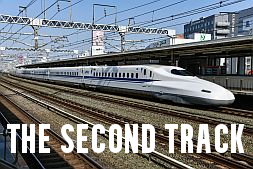On homophily

Until recently, researchers believed that the main principle involved in how we select our social ties has been what the ancient Greeks called homophily, or love of the similar. Political homophily—love of those who are politically similar—is one of the strongest and best-documented phenomena in social science. It influences how we choose the city we live in, our schools, our partners, our hobbies and even our music.
Political homophily is common and increasing in intensity. In 1960 4 percent of US Democrats and 5 percent of Republicans reported that they would be upset if their child married someone from the other party. By 2010 these numbers had grown to 33 percent of Democrats and 49 percent of Republicans. Homophily leads to political segregation, which in turn intensifies hostility and polarisation.
People are not only attracted by those who are politically similar but also attracted by those who hold more politically extreme versions of their views. This tendency is called acrophily, or love of extremes. People generally prefer to read about the emotional responses of those with similar views (political homophily) and are attracted to extremes (political acrophily). Whether liberal or conservative, participants tended to choose peers whose views were more extreme than their own.
As Australians, we are aware that we are directed on the internet towards items we have shown an interest in in the past. Most of us tend to feel that this is not a particularly healthy state of affairs but tend to accept it as part of Microsoft’s and Google’s business processes. However, at the same time we mostly tend to read and research only those concepts and ideas which interest us at the time.
Many factors may drive attraction to extremity. Individuals who hold zealous or intensely felt views may provide us with sharper arguments for the next online political discussion or debate. In addition, people who are more extreme may be more vocal and seem more coherent—that is, they have opinions across a range of issues that are more consistently aligned with a single political ideology. Those traits can be attractive.
Political Consequences
In research published last year, Argentine social scientist Federico Zimmerman and his colleagues asked 2,632 people to have a political discussion with a stranger and then rate how much they liked that person. Participants showed a strong preference for conversation partners who expressed more confident and ideologically consistent political views as opposed to those who had more ambiguous or ambivalent attitudes.
In other words, people were more attracted to those who had strong ideas and were able to communicate them effectively. This might help explain why so many Americans still believe that Trump would be a good president in spite of his proven lies, misleading remarks and amazingly poor grasp of international politics.
It has been found that the combination of acrophily and homophily likely leads people to rapidly self-select into more extreme camps. Ultimately, that pattern speeds up segregation and makes it harder to cooperate, compromise and find common ground—all essential features of a healthy society.
I used to be on Facebook but gave up after a few months after finding it was filled with friends, relatives and acquaintances arguing about COVID-19, masks and Trump. Facebook has become a battleground among partisan “echo chambers.” But what is it about social media that makes people so polarised?
The answer lies in something social media has amplified: “influencers.” By now, most of us have a fairly specific understanding of what an “influencer” is. The word conjures up a young, wealthy person whose lifestyle is sponsored by brands like Instagram, TikTok or YouTube. But the word has a very specific network science meaning.
Network Effects
In social media, networks tend to be centralised: a small number of people, or perhaps just one person, at the “centre” of the network is connected to lots of other people in the “periphery.” The multitudes in the periphery of the social network have only a modest number of connections, while the few—the so-called “influencers”—at the centre of the network are connected to nearly everyone. This puts these people into the powerful position of being able to exert a disproportionate level of “influence” over the group.
By contrast, some networks are “egalitarian”—the opposite of centralised. In an egalitarian network, everyone has an equal number of contacts, and therefore influence, throughout the network (forums, U3A sites, clubs, etc).
The key feature of an egalitarian network is that new ideas and opinions can emerge from anywhere in the community and spread to everyone. But in centralised networks—like many social media sites—ideas are filtered through, or sometimes even blocked, and so have very different effects on partisan bias and the acceptance of new ideas.
In a centralised echo chamber, if the influencer at the middle shows even a small amount of partisan bias, it can become amplified throughout the entire group. But in egalitarian networks, ideas spread based on their quality, and not the person touting them. There is a lot of wisdom in network peripheries, in regular people with good ideas. When the social network enables those people to talk with each other, new thinking that challenge a group’s biases can take hold and spread.
To see how egalitarian networks might affect other kinds of contentious issues, an experiment was conducted between smokers and nonsmokers discussing the risks of cigarette smoking both groups moved toward a more accurate understanding of smoking risks.
Moreover, when participants were interviewed after the study, they reported having developed higher opinions of the other. Both smokers and nonsmokers had come to view the other group as more reasonable and trustworthy about the risks of smoking. But the exchange of ideas and eradication of bias only works when networks are egalitarian.
The problem of partisan bias is exacerbated on social media because online networks are often organised around a few key influencers. This feature of social media is one of the main reasons why misinformation and fake news has become so pervasive. In centralised networks, biased influencers have a disproportionate impact on their community—enabling small rumours and suppositions to become amplified into widespread misconceptions and false beliefs.

Alan Stevenson spent four years in the Royal Australian Navy; four years at a seminary in Brisbane and the rest of his life in computers as an operator, programmer and systems analyst. His interests include popular science, travel, philosophy and writing for Open Forum.







